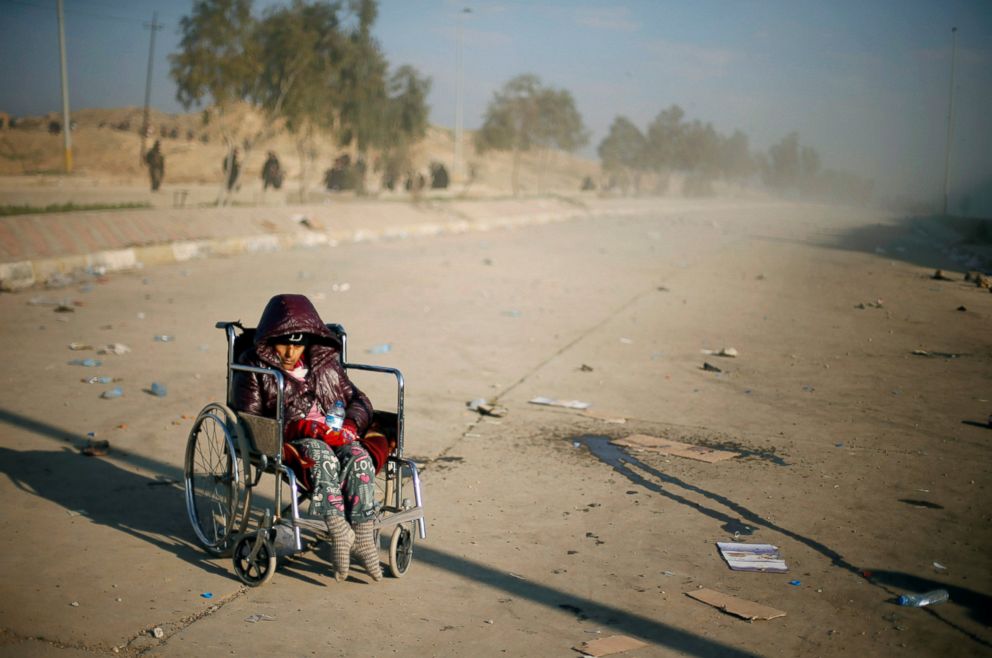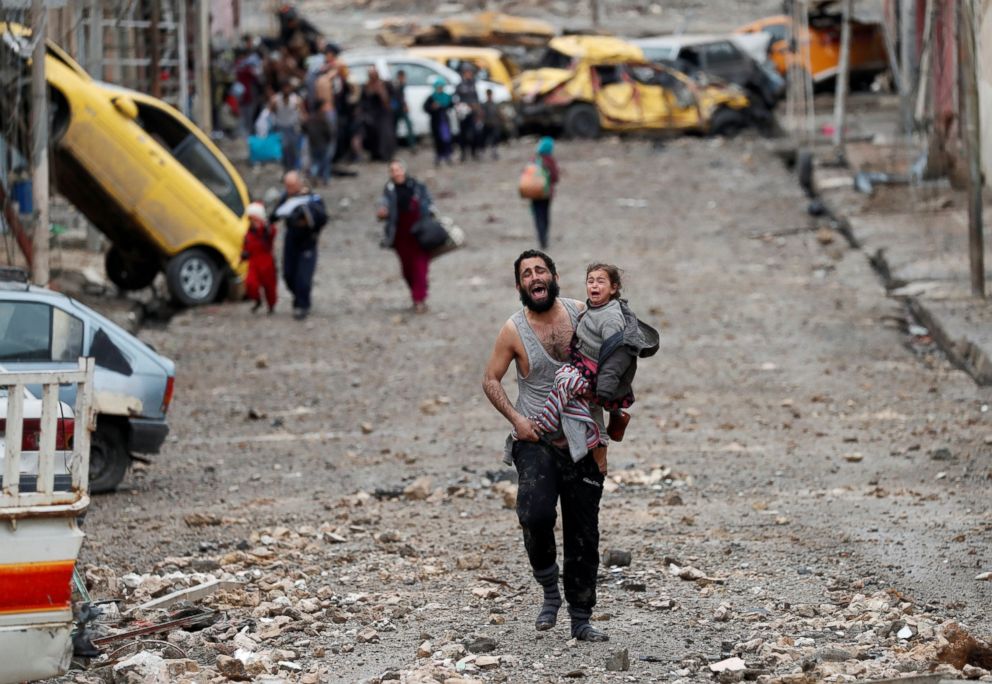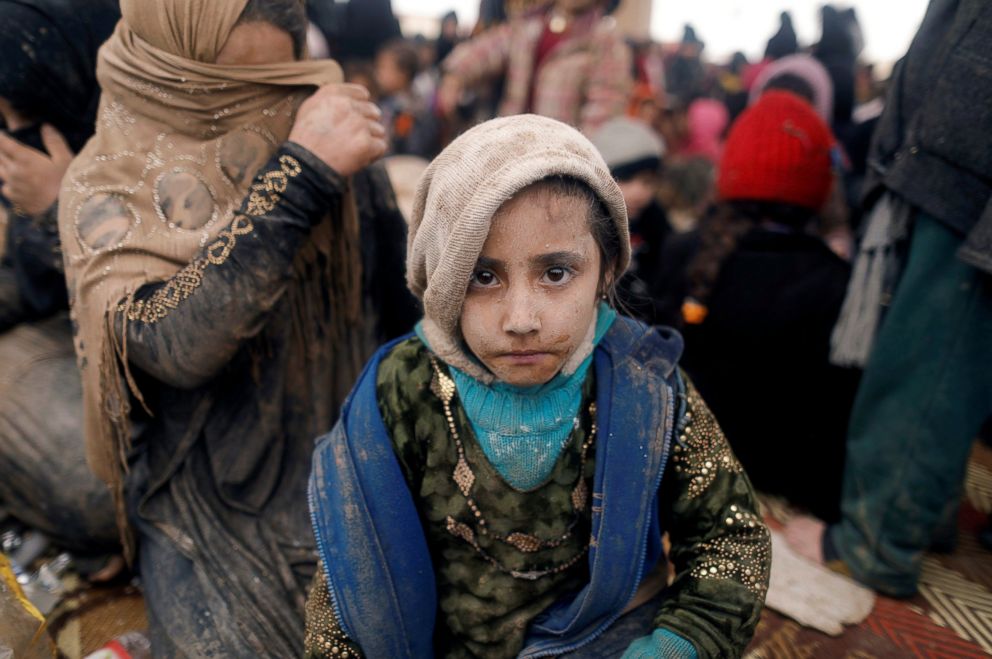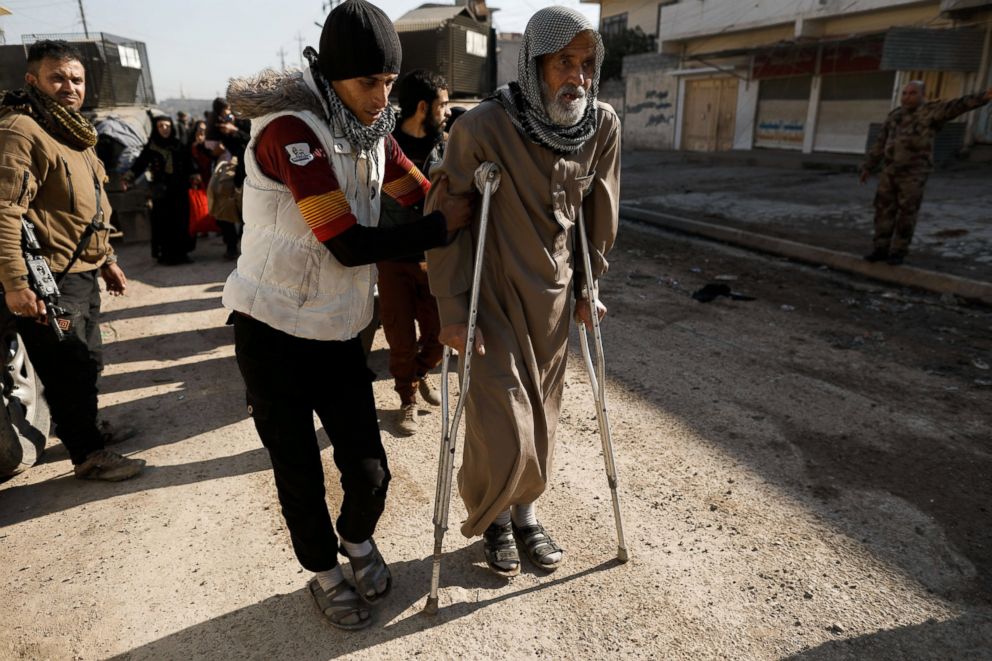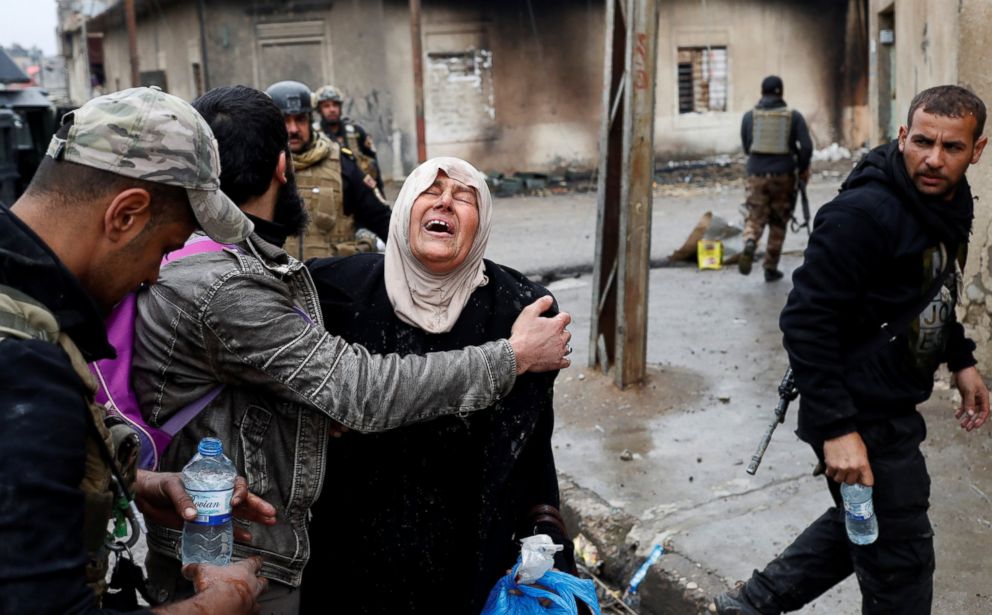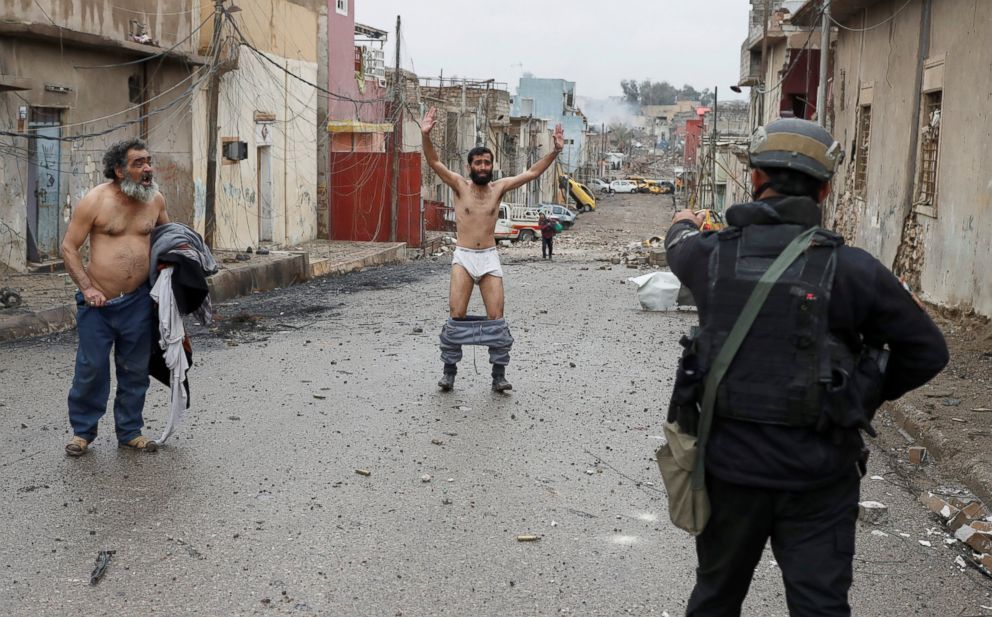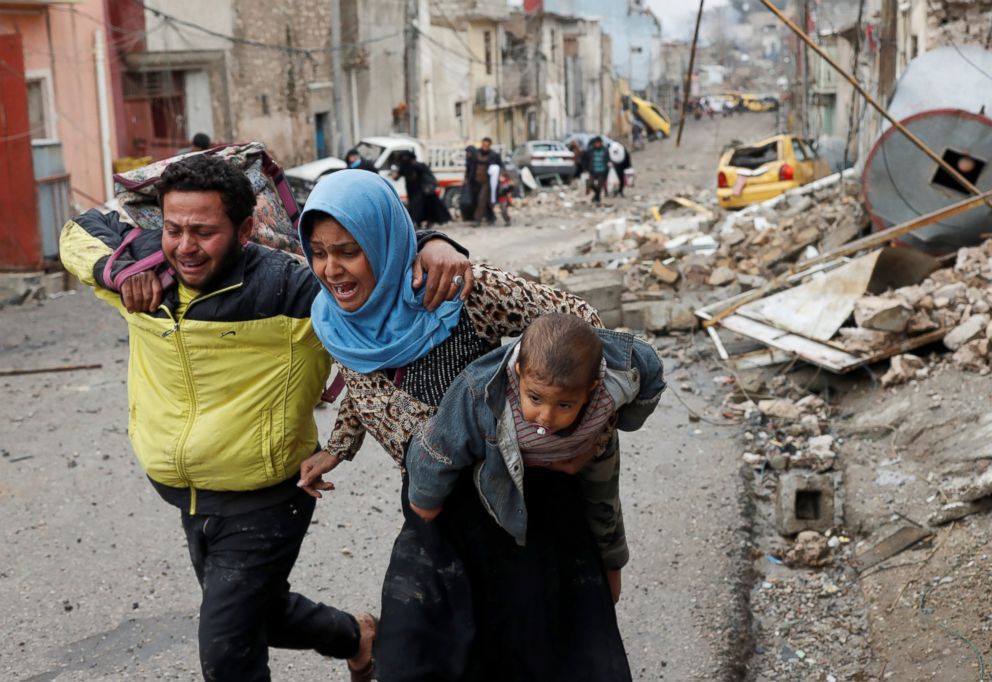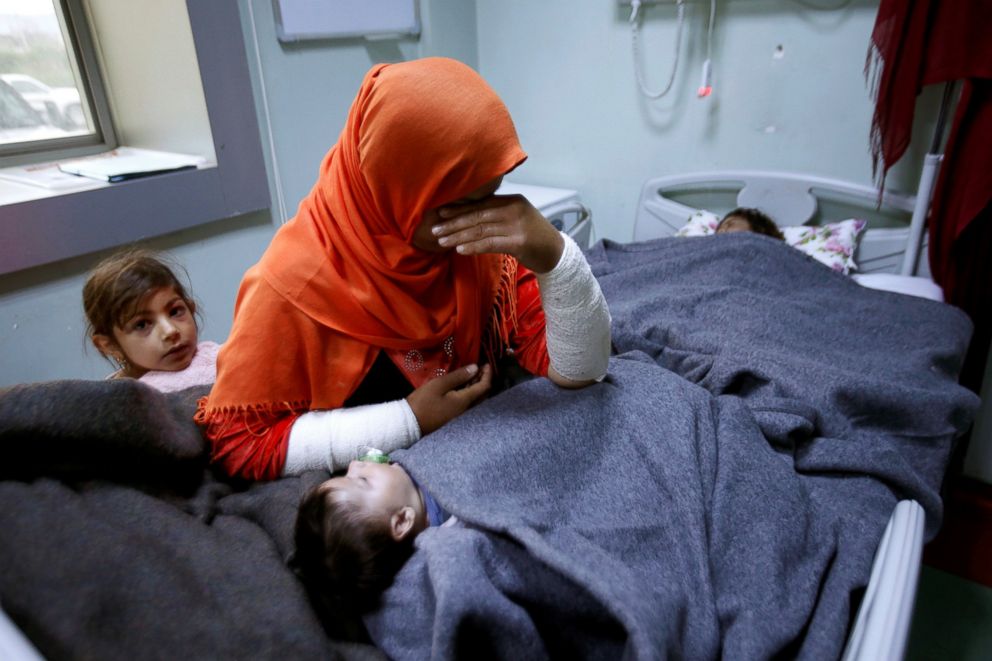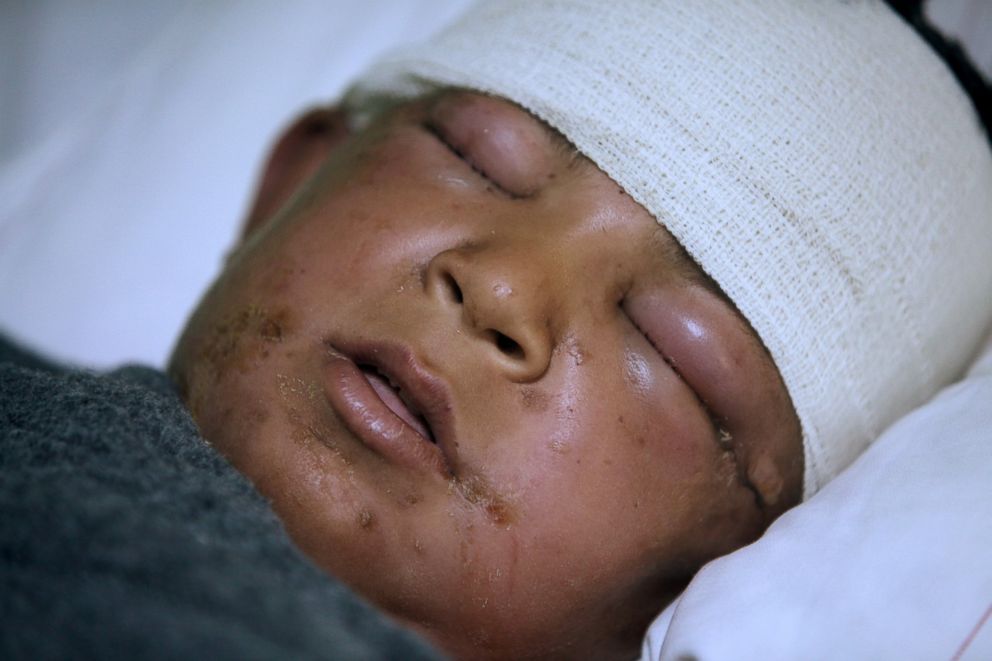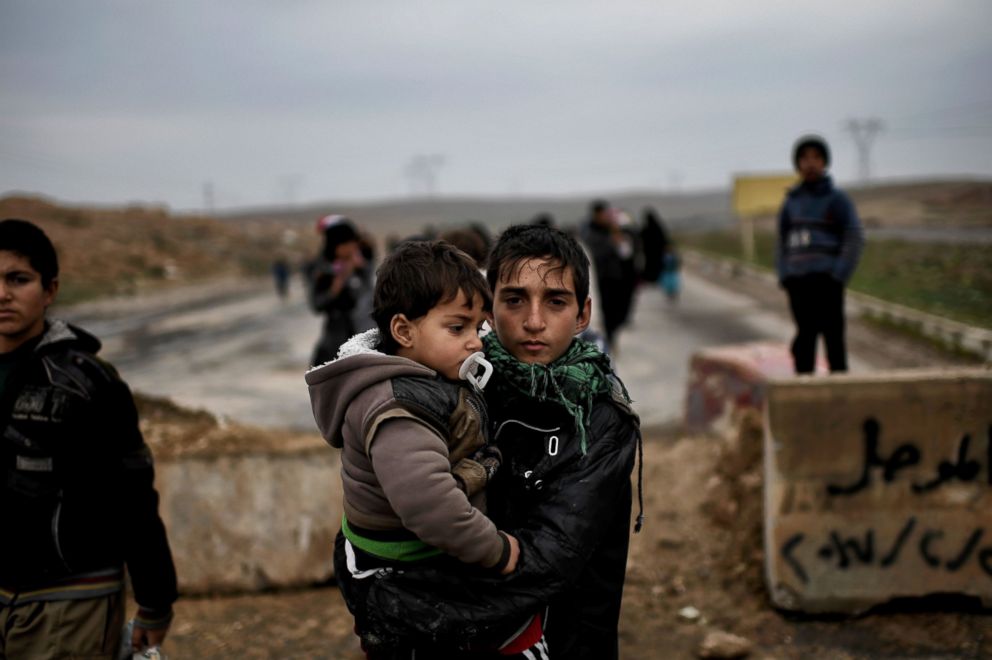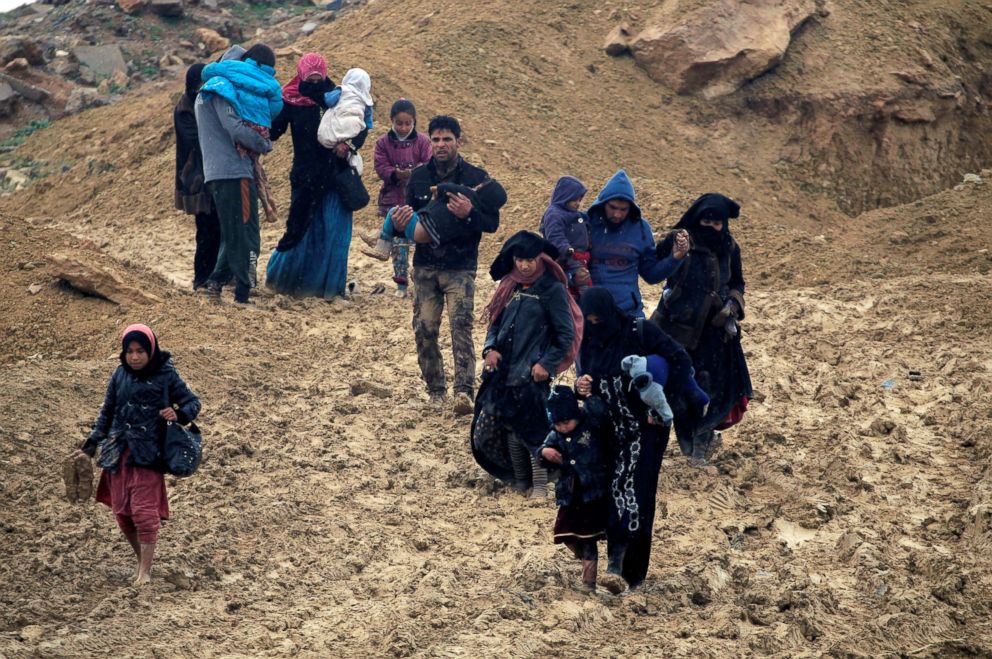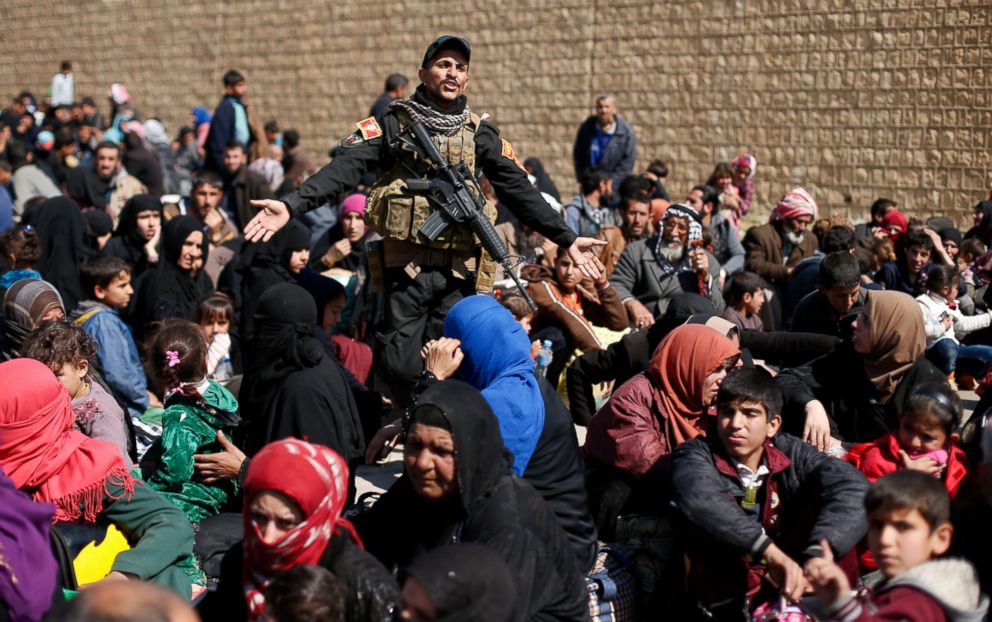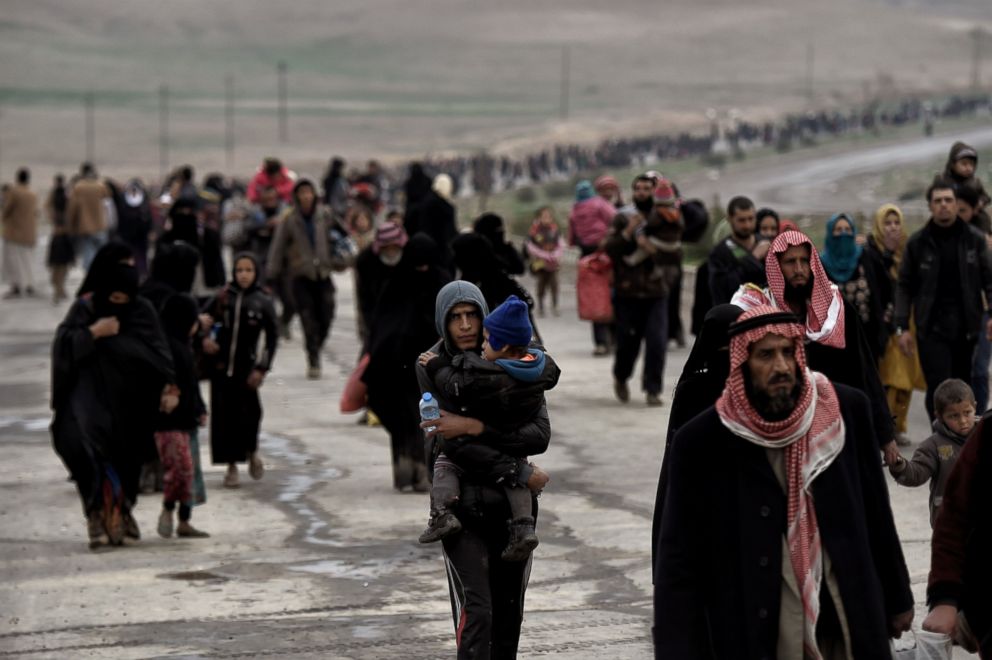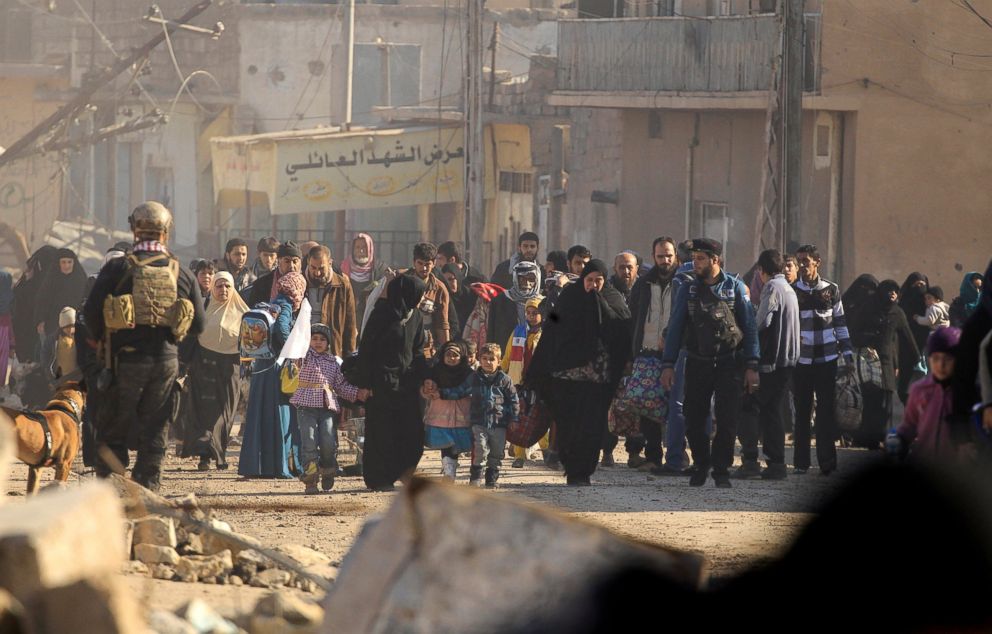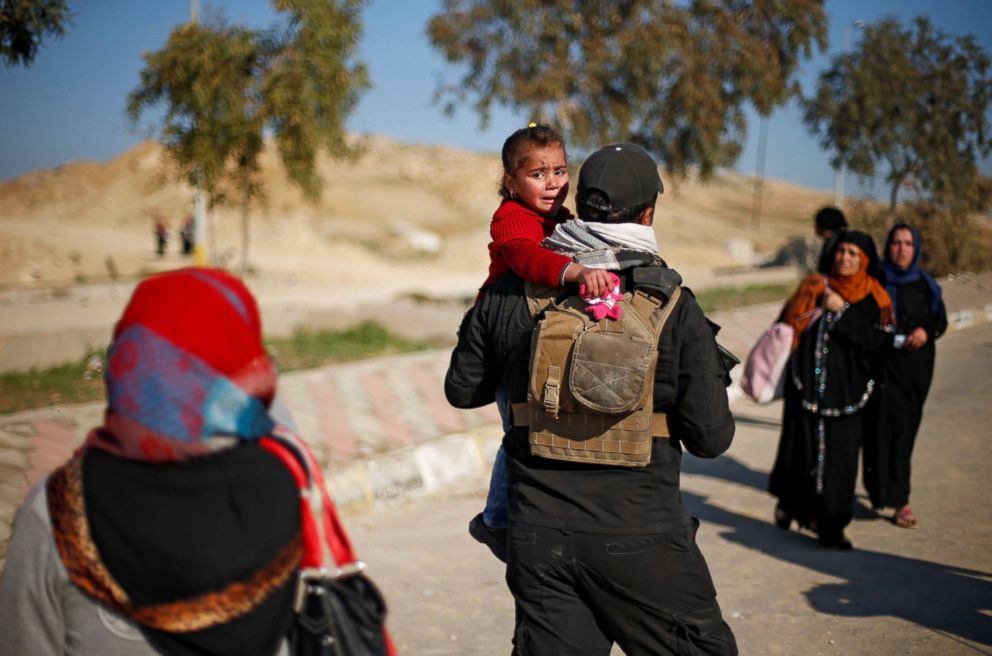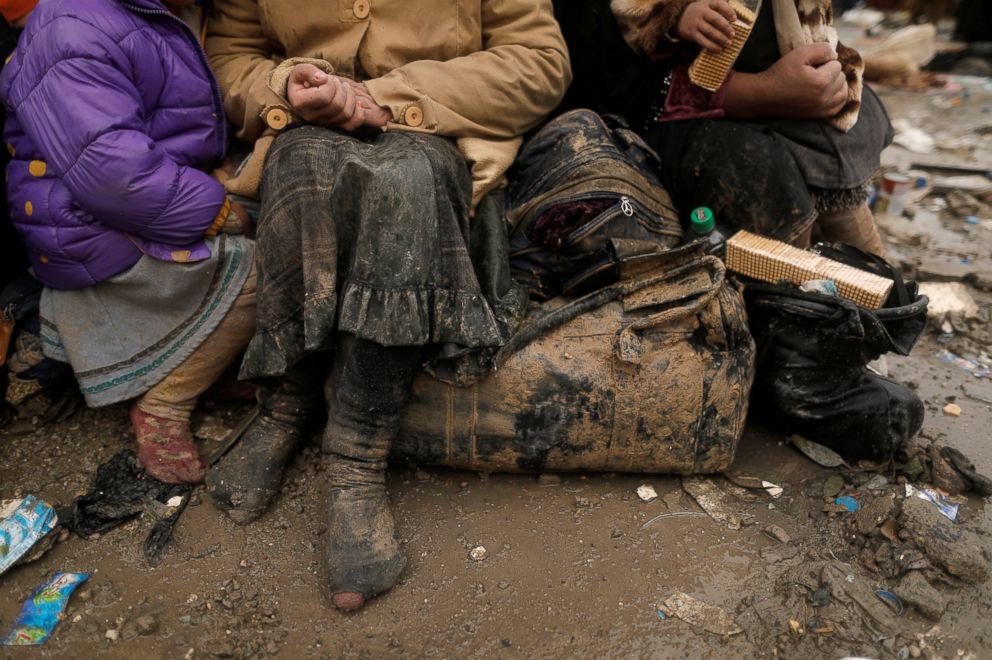Animals rescued from Mosul's abandoned zoo arrive safely in Jordan
A lion named Simba and a bear named Lula are the zoo's only surviving animals.
— -- It took two rescue attempts and nearly two weeks to successfully evacuate the last two surviving animals from a derelict zoo in war-torn Mosul, Iraq. But if he could do it over, veterinarian Amir Khalil wouldn’t hesitate.
“These animals don’t have the option to be evacuated by the army,” Khalil, who organized the evacuation, told ABC News. “If I had the chance, I would do it again and again and again.”
Khalil, who works with the animal welfare charity Four Paws International, said the two animals – a lion named Simba and a bear named Lula – arrived safely at an animal rehabilitation center in Amman, Jordan, on Tuesday where they are recovering from their strenuous journey.
The rescue was no easy feat and took months of planning after an initial mission by Four Paws to provide the animals with food and urgent veterinary care -- all of which took place amidst a brutal conflict and ongoing violence.
Operation rescue Simba and Lula
The park housing the Montazah al-Morour Zoo sits on the eastern bank of the Tigris River in Mosul, the site of a brutal struggle since ISIS took over the city in 2014.
ISIS set up a military base at the park after invading the city. Many of the zoo’s lions, bears, monkeys, tropical birds and other wild animals died during the militants’ occupation, according to Four Paws.
The Iraqi government began an operation to retake Mosul in October of last year.
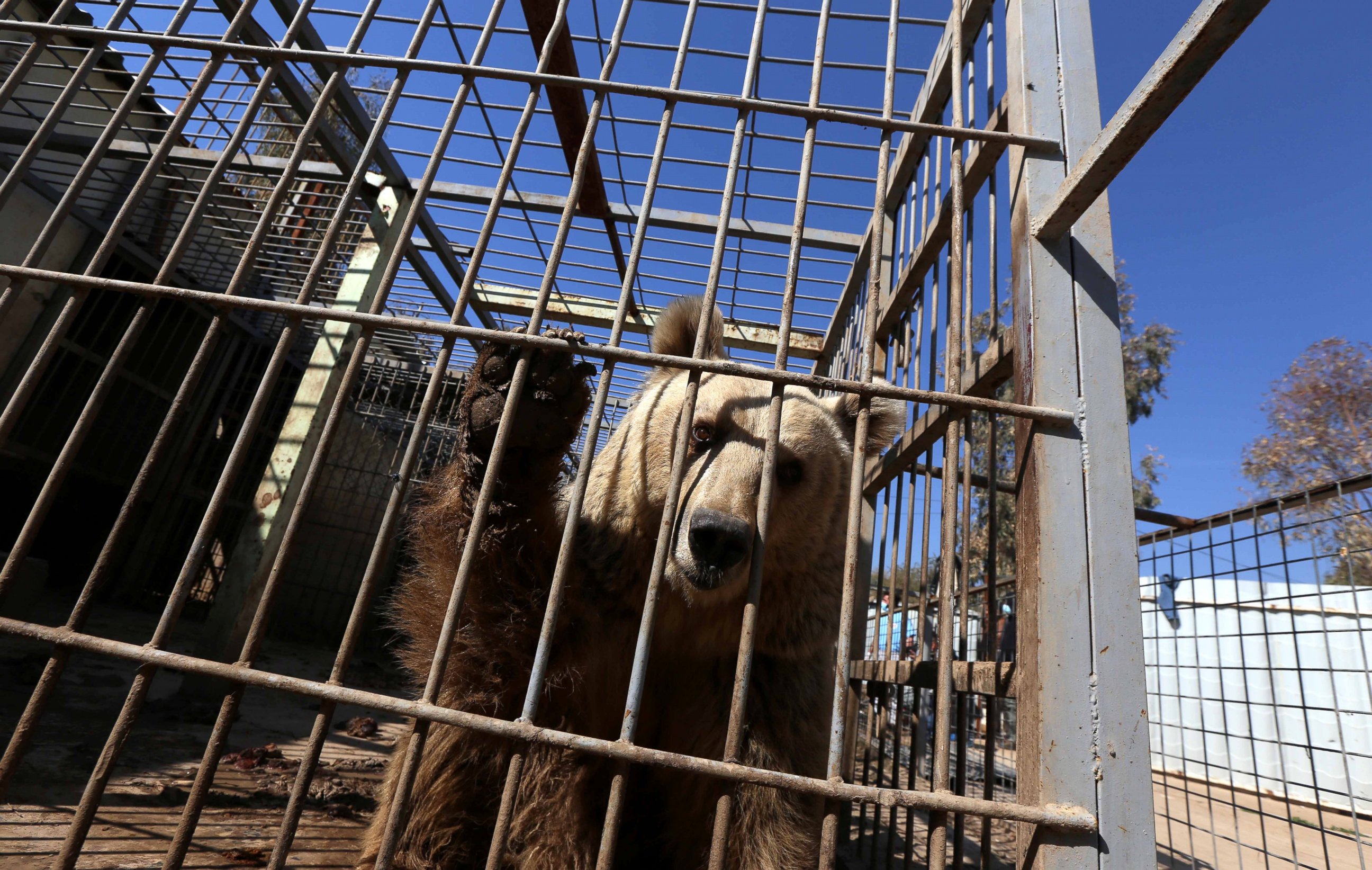
When Khalil led a rapid response team from Vienna-based group to the zoo on Feb. 21, it was nearly destroyed, and bombs had ripped open cages. Nearly 40 animals that once inhabited the zoo have died, he said.
Trapped in their cages and unable to escape the conflict around them, some animals were killed in the crossfire, while many others starved to death. Animals that were able to escape their enclosures were eaten by predators. The only known survivors were Simba and Lula, who were locked in their cages and on the brink of starvation, according to Khalil.
Simba’s and Lula’s cages were filled with debris, and the animals were sitting in their own feces and urine, Khalil said. The bear suffered from pneumonia, and the lion had a joint condition. Both had severe diarrhea and rotting teeth.
Khalil learned that Simba’s mother had died of starvation. Locals buried her body in a grave next to his cage. Lula was a mother to cubs that also did not survive the dire conditions.
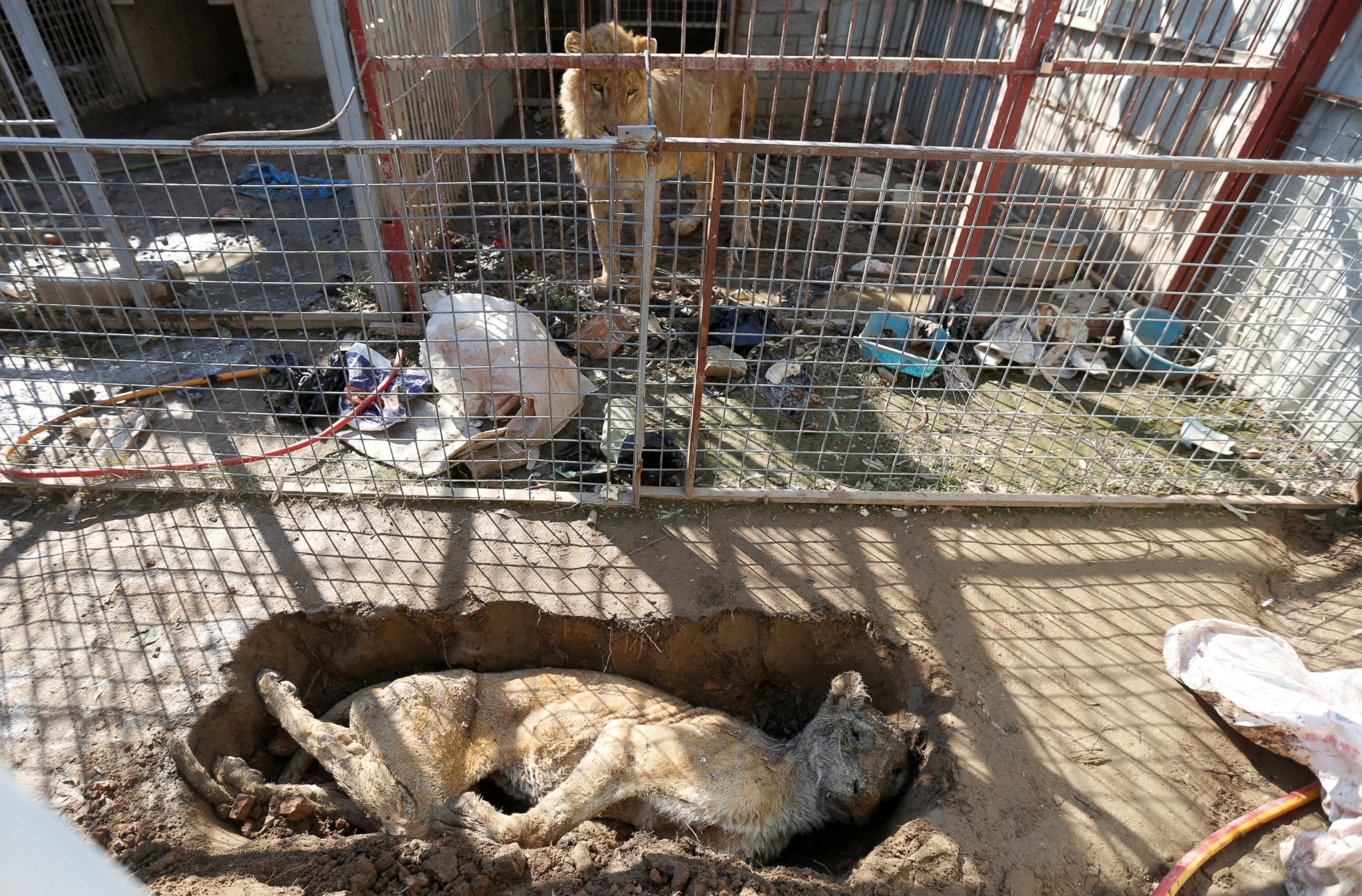
Many of the zoo’s caretakers were killed by ISIS or died in the crossfire of the operation to retake Mosul. Those who survived and remain in the area are wounded and have been unable to look after the zoo animals, according to Khalil.
Local residents told Khalil they tried to feed the animals whenever they could but they don’t have the funds to purchase the necessary supplies or the proper experience to care for wild animals.
Khalil and his team provided Simba and Lula with food and urgently needed care during the mission in February. The team also cleaned their cages for the first time in months.
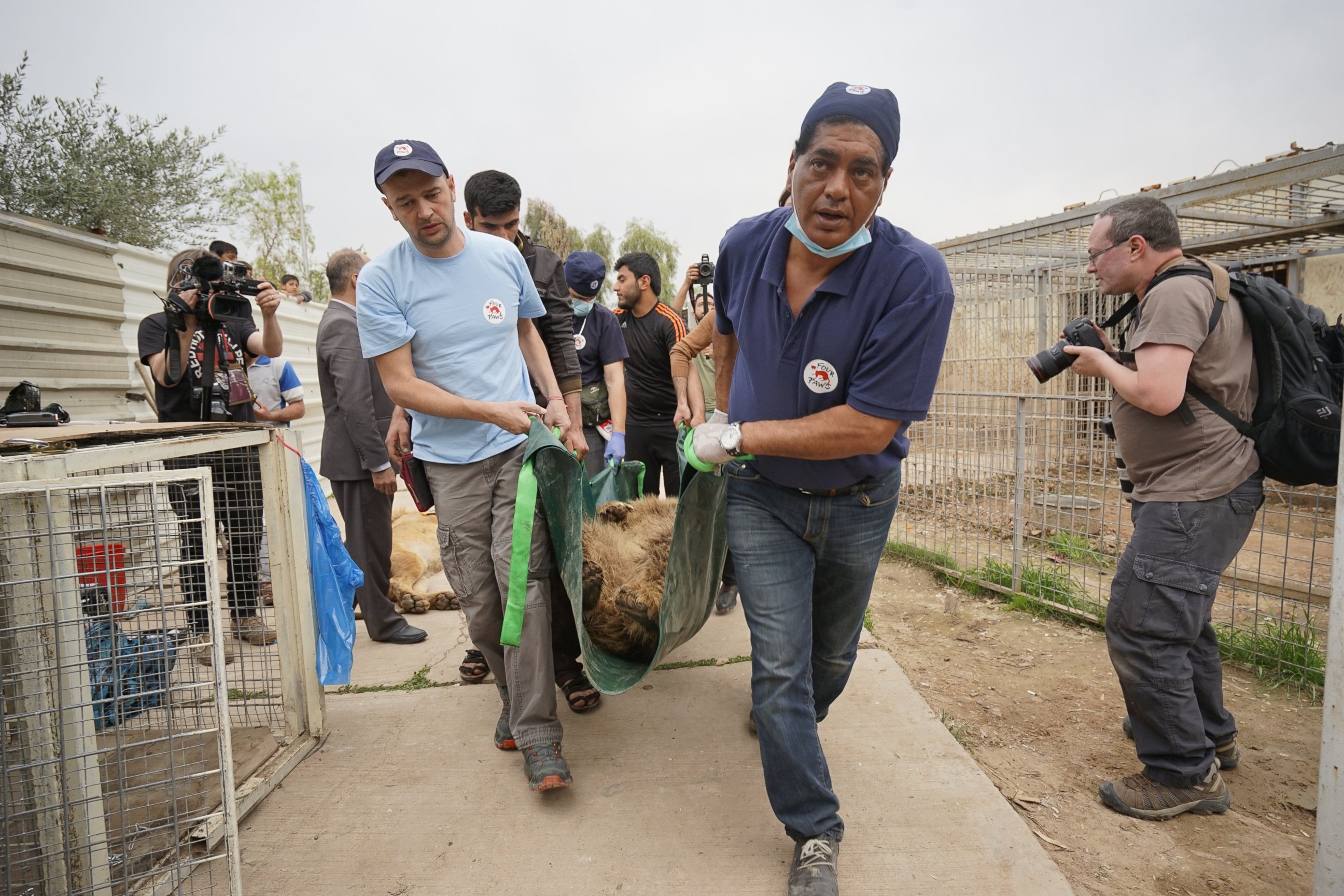
Before leaving Mosul, Khalil and his team trained local volunteers on how to care for the animals and left the residents with enough food and medicine for four weeks, hoping to return to the war-torn city soon with a long-term solution for Simba and Lula.
That fix materialized a month later when Four Paws received permission to reenter eastern Mosul and evacuate the animals.
Khalil led a rescue mission to save Simba and Lula on March 28. They anesthetized the animals, loaded them into prepared crates on a truck and traveled with them to the edge of Mosul.
But the mission came to a screeching halt at a checkpoint near the border out of the city when Khalil and his team were told they weren’t allowed to leave with the animals. The Iraqi military subsequently took Simba and Lula back to the zoo while the Four Paws team was forced to exit Mosul.
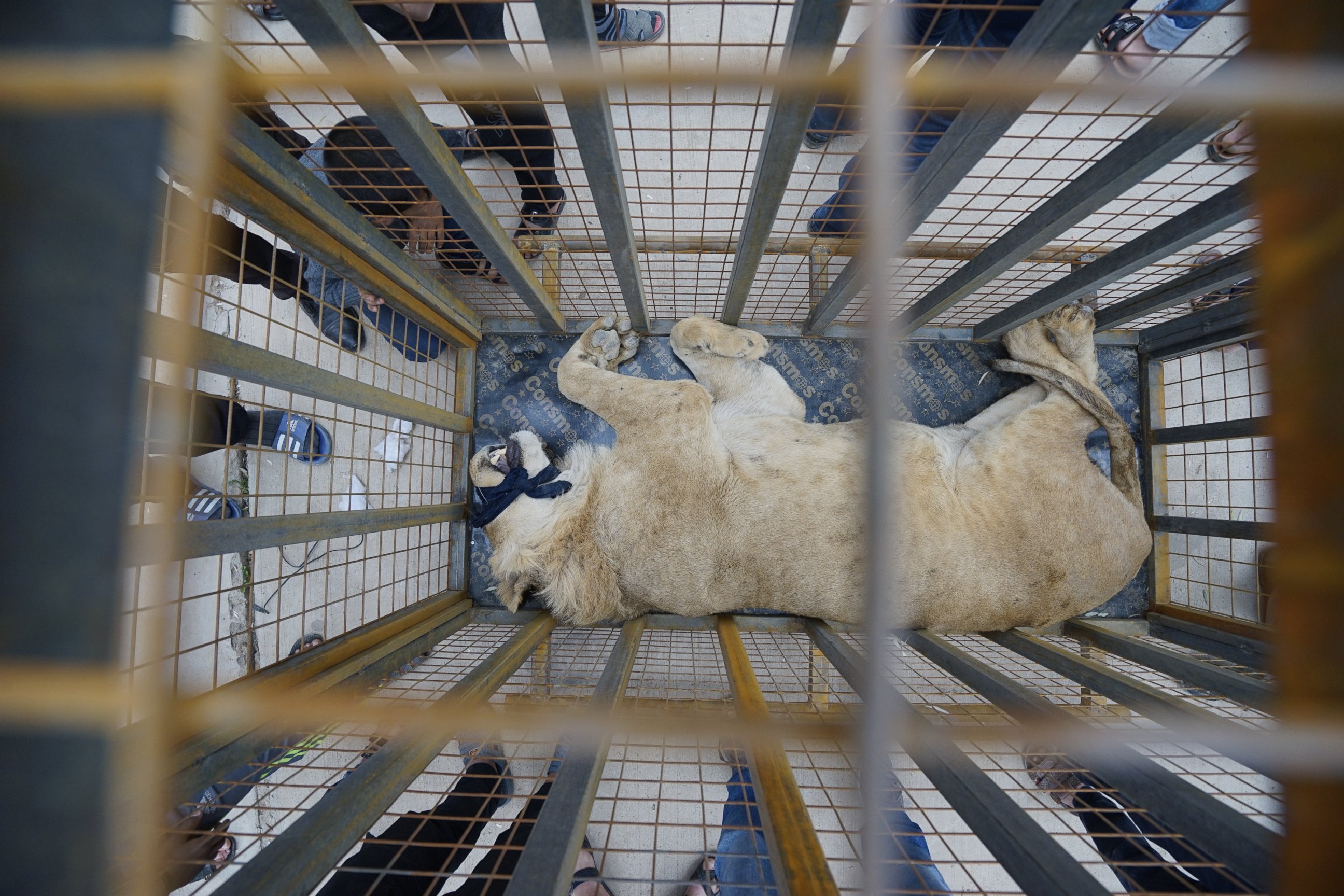
After negotiating with the Iraqi military, Khalil and his team were allowed to reenter Mosul for the second rescue attempt two days later. But they were stopped at the checkpoint near the border once again.
This time, the Four Paws team and the animals were stuck at the checkpoint for nine days. Khalil and his team slept in a small container provided by the military that didn’t have electricity or water, while Simba and Lula had to remain in their transport crates.
“We are trained to survive such situations. But for the animals, this was a challenge,” Khalil told ABC News.
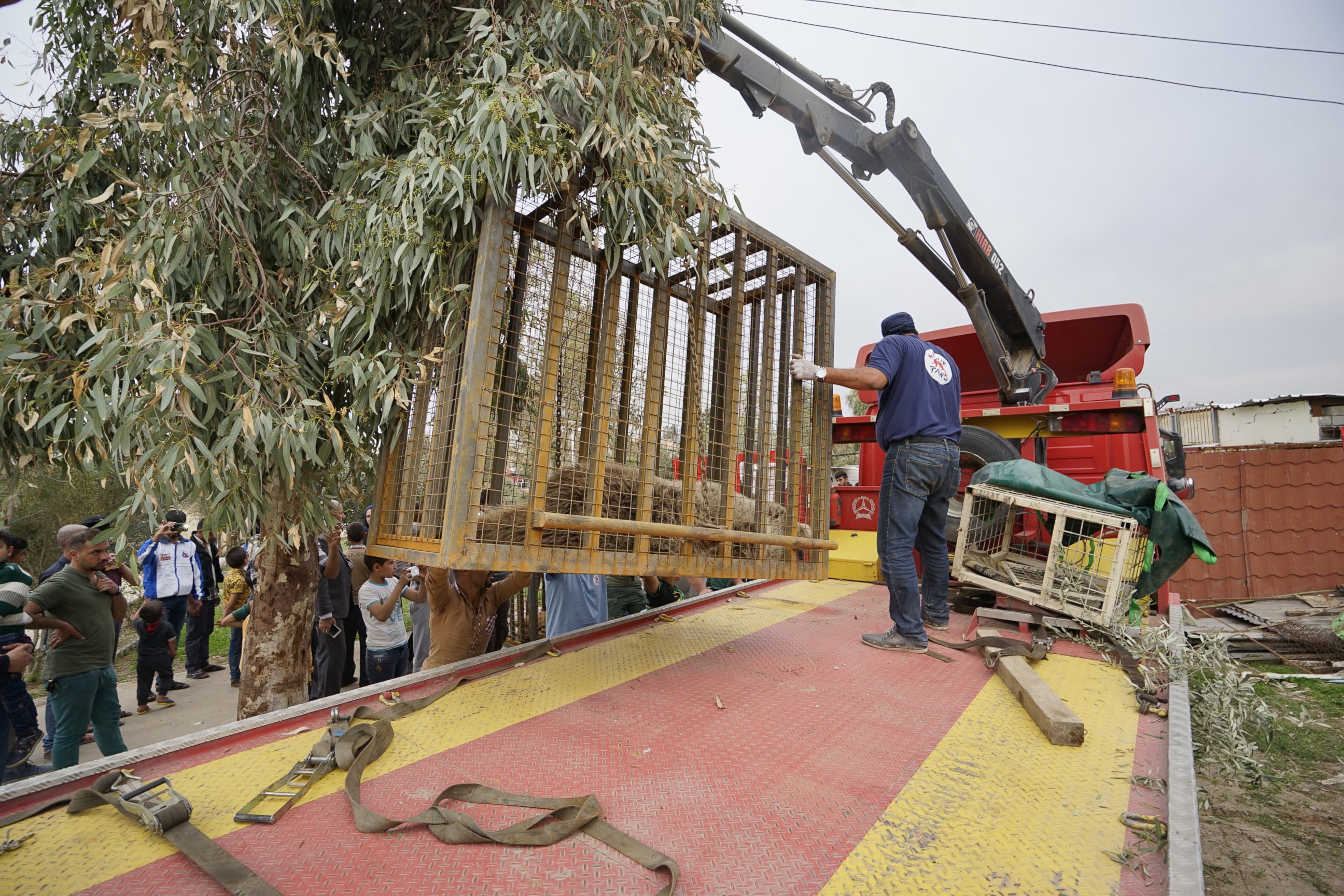
This is not the first time Khalil, a 52-year-old Egyptian native, has helped animals in conflict or disaster zones. He is specifically trained to do so. He saved animals at Libya’s Tripoli Zoo after the 2011 uprising that toppled Muammar Gaddafi and rescued animals from Iraq’s Baghdad Zoo after the 2003 U.S. invasion.
In August 2016 he and his rescue team evacuated all 15 remaining animals at the Khan Younis Zoo, dubbed the worst zoo in the world, in the besieged Gaza Strip. After receiving veterinary attention, the animals were transported to sanctuaries in Jordan, South Africa and elsewhere.
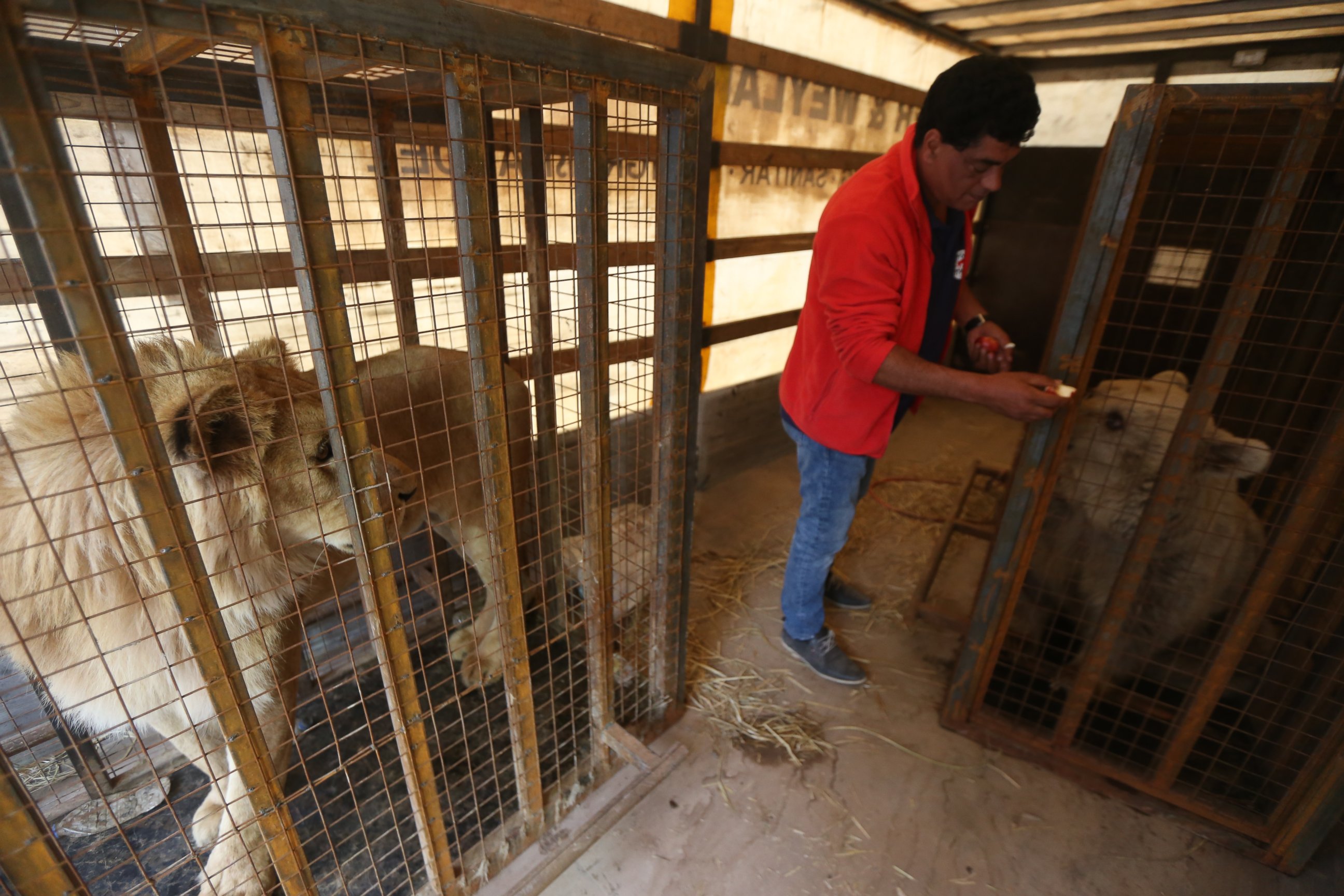
Despite holding them at the checkpoint for days, Khalil said the Iraqi soldiers developed a relationship with his team and the animals and did what they could to ease the situation. Locals who caught word that the zoo animals were stuck at the checkpoint brought their children to the border to catch a glimpse of Simba and Lula one last time.
“Our mission in Iraq was supported by many locals and proved that even in worst hardships there are people who care for animals,” Khalil said. “I am very touched to have experienced the humanity of the civilian population as well as military. Many of the soldiers shared their food with the animals.”
After further negotiations, the Four Paws team was able to exit Mosul with Simba and Lula. They took a cargo flight out of Erbil and touched down in Amman around midnight Tuesday.
“It was an odyssey,” Khalil said. “From the beginning, these animals wanted to survive.”
The ongoing battle for Mosul
It took 100 days of bloodshed and street-to-street fighting for Iraqi troops to seize the eastern half of Mosul from ISIS. Hundreds of thousands of civilians have been displaced by the ongoing fighting there, and the harrowing sights of a city they were forced to leave behind have become emblematic of their suffering — including starved animals at the abandoned Montazah al-Morour Zoo.
Mosul, Iraq’s second-largest city, fell under ISIS rule in the summer of 2014, when the jihadist group took over swaths of northern and western Iraq. Today, Mosul is the group’s last urban stronghold in the country.
On Oct. 17, 2016, about 18,000 Iraqi forces, 10,000 Kurdish forces known as peshmerga and a few thousand Iraqi federal police launched the massive operation to free Mosul from ISIS control. Iraqi special forces joined the fight four days later. These forces also received assistance from American military advisers in Iraq.
On Jan. 24, Iraqi Prime Minister Haider al-Abadi declared eastern Mosul “fully liberated” from ISIS. On Feb. 19 he announced an offensive was launched to retake the western side of Mosul. That half of the city, on the west bank of the Tigris River, is more densely populated and it is believed that ISIS fighters will take advantage of the narrow streets to slow down the military offensive.
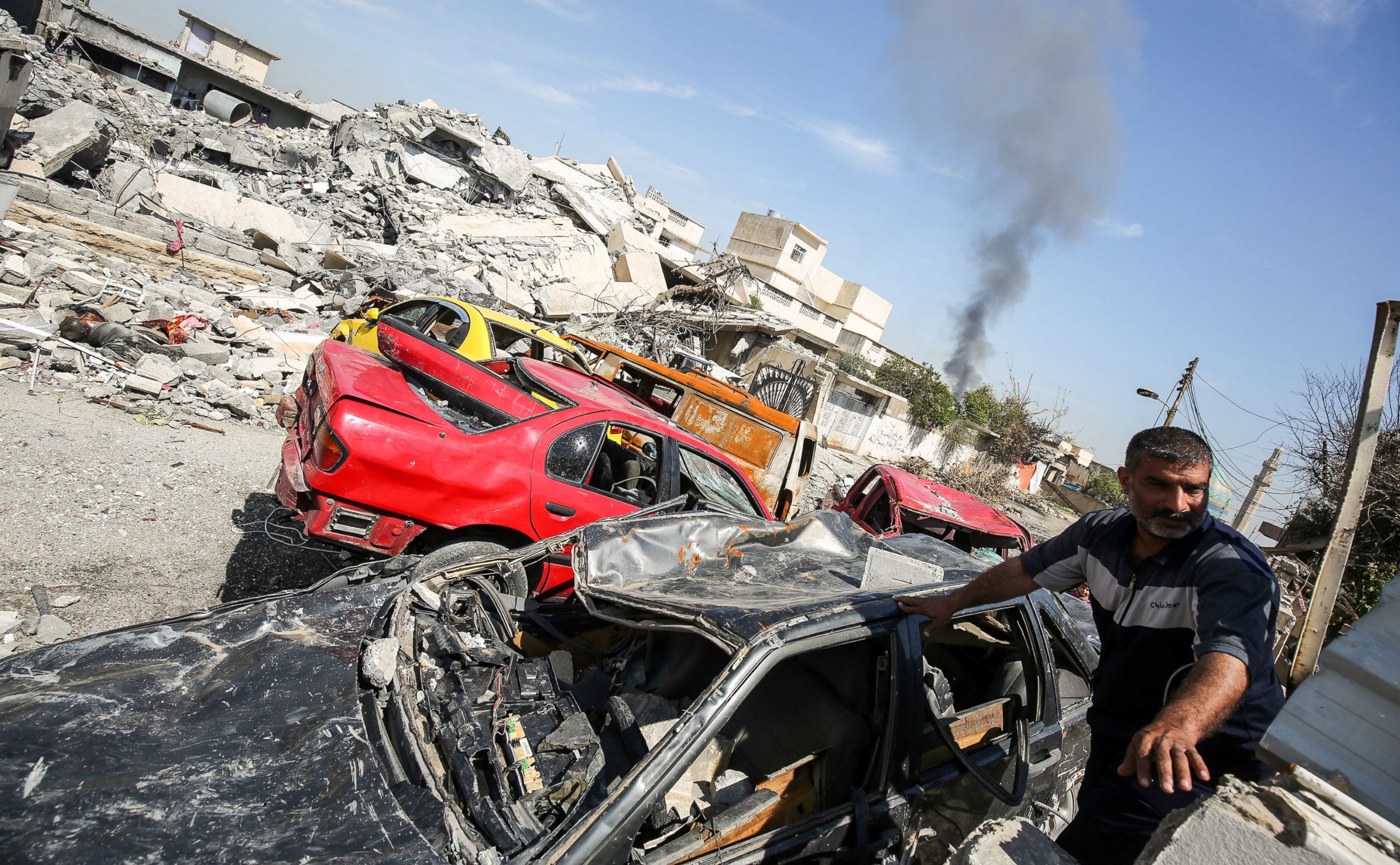
Gen. Joseph Votel, commander of the U.S. Central Command, told reporters at the Pentagon on Tuesday that the offensive in Mosul has developed into a “very, very difficult” battle as Iraqi-led forces engage in block-by-block fighting with the enemy in the city’s western half.
Col. John Dorrian, spokesman for the U.S.-led coalition fighting ISIS, told a press briefing in Baghdad on Wednesday that Iraqi-led forces continue to make incremental progress on the western side of Mosul as ISIS has intensified their exploitation of civilians by strategically moving them in larger numbers into harm’s way.
The Iraqi army continues securing eastern Mosul as a hold force, and nearly 500 square kilometers of western Mosul’s dense urban terrain have been cleared since operations commenced there in February, according to Dorrian.
“The Iraqi security forces retain control of both main routes west from Mosul, eliminating enemy freedom of movement,” Dorrian told reporters. “This enemy in Mosul is not going anywhere.”
Displaced families flee Mosul
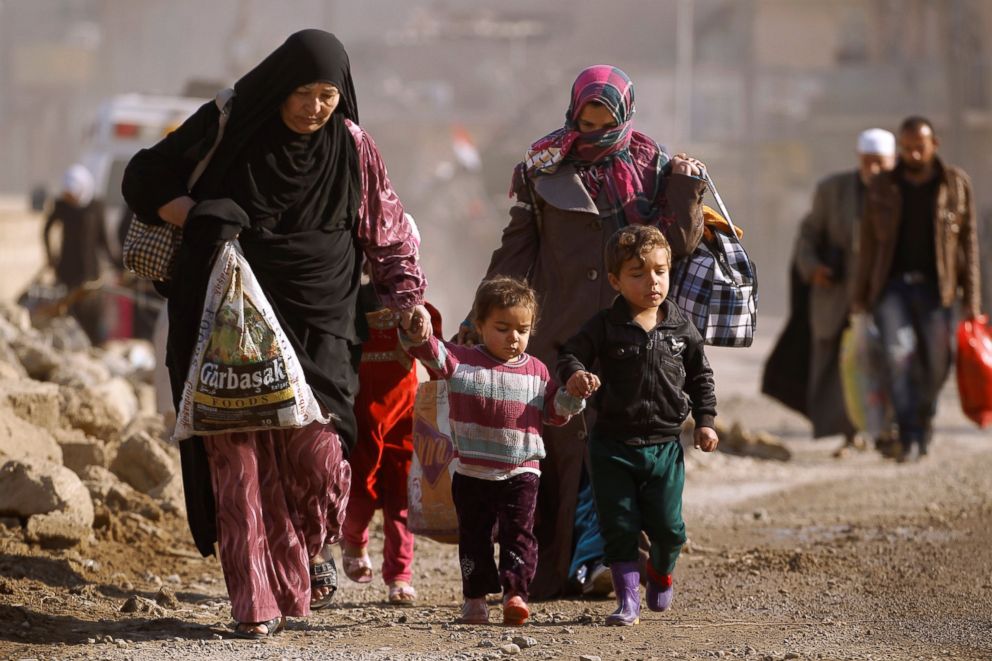
The United Nations refugee agency (UNHCR) said in a press release Wednesday that, according to government figures, more than 400,000 people have been displaced from Mosul and surrounding areas since October, when the military offensive began, including 282,000 individuals displaced from western Mosul since mid-February. An estimated 91,000 people have since returned to their areas of origin.
Those who fled their homes risked their lives to do so and often walked long distances to reach safety at government checkpoints. Many arrived in desperate condition, visibly traumatized, famished, dehydrated, without shoes and wearing soaked clothing, according to the UNHCR.
“We were starving for one month, just feeding the children water and flour, and sometimes we could improve the diet with a bit of tomato paste. It was either stay and die or flee and risk death. Hunger was the main reason for us to leave,” Adil, 34, told the UNHCR, describing his family’s escape from western Mosul in recent months.
A new life for Simba and Lula
Simba and Lula are currently under the watch and protection of veterinarians and animal keepers at the New Hope Center in Amman, where they are living in grass-covered enclosures for the first time in their lives.
Lula has already taken well to her new surroundings, showing no signs of fear or insecurity. She appeared happy frolicking in the grass and giving herself a bath in a trough of water, Khalil said.
Simba has been more timid and shy, Khalil said. After initially scoping out his new enclosure, Simba returned to his shelter where he’s largely remained. Khalil, who said lions tend to be more sensitive than bears, is hopeful Simba will feel more secure with time.
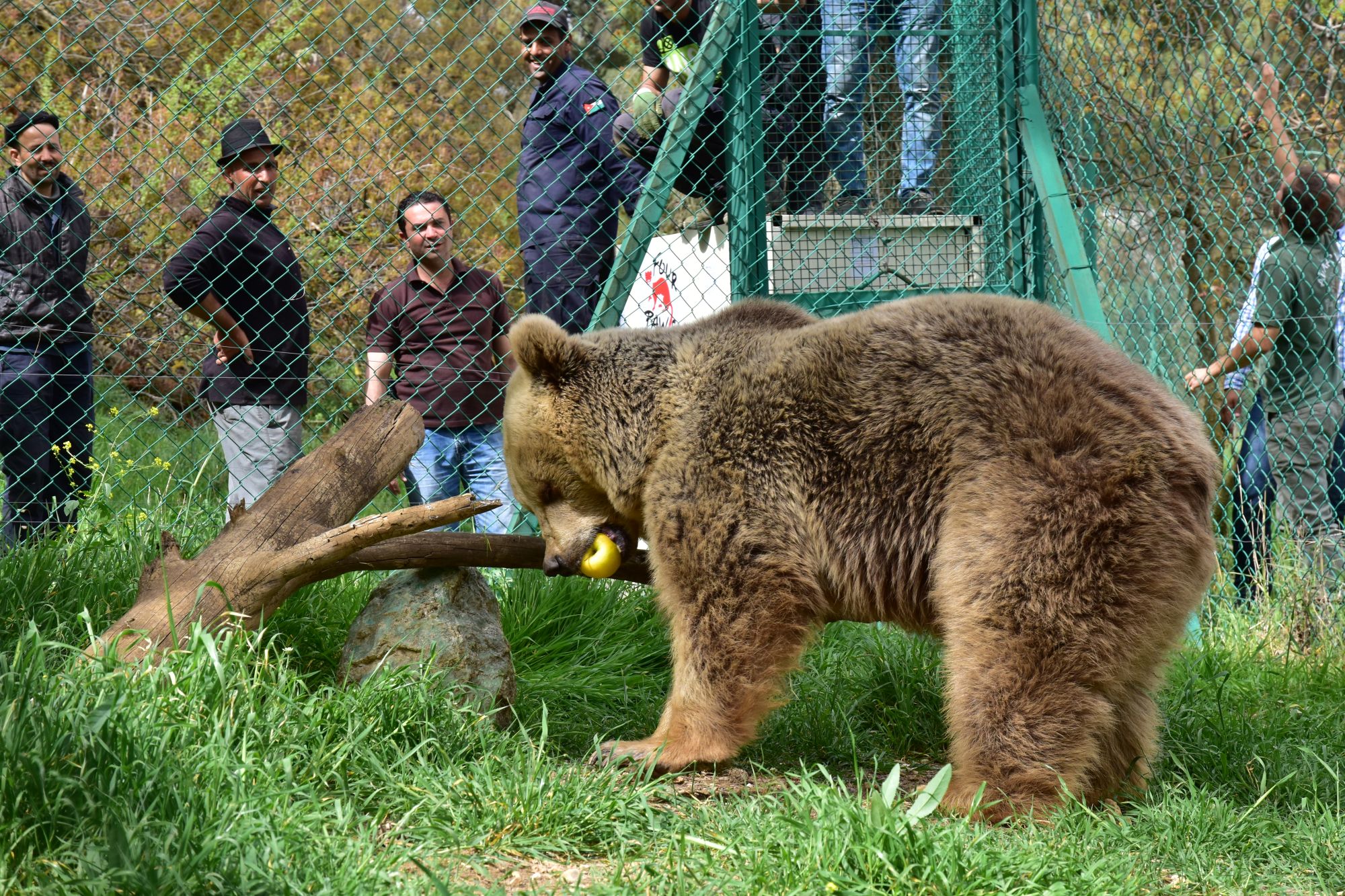
In a few weeks, Simba and Lula will be transported to their final destination – the Al Ma’wa for Nature and Wildlife sanctuary in Souf, some 35 miles north of Jordan’s capital. There, they will live in a species-appropriate environment among other animals that were also rescued from war-torn countries.
Khalil, who has returned to his home in Vienna, said he will travel back to Jordan when it’s time to move Simba and Lula to the animal sanctuary.
“I’ll be very, very glad to bring them to this place where they won’t need to worry anymore,” Khalil said. “Our mission is finished, but the life of Lula and Simba is just starting.”
ABC News’ Jeff Costello, Mazin Faiq, Alex Marquardt, Matt McGary, Luis Martinez, Blair Shiff and Phaedra Singelis contributed to this report.
